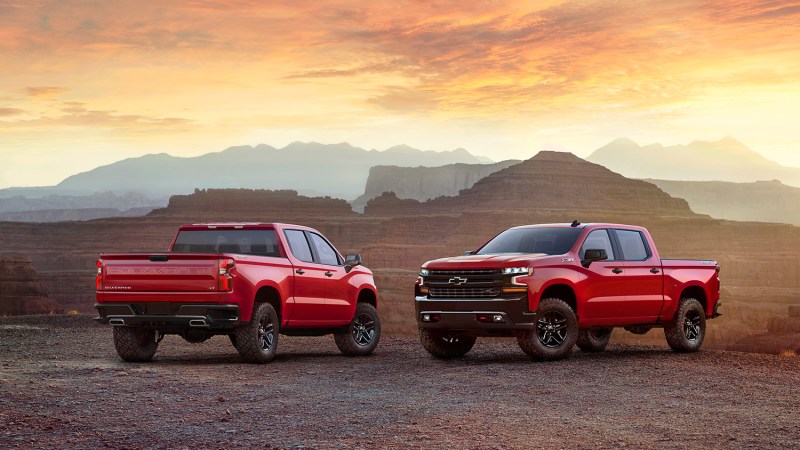
American automakers are defined by their trucks, which is why it’s always a tit for tat relationship between Ford, GM, and Ram. When one brand updates its pickup, you can be sure the others are working on a response.
2019 will be an especially important model year for truck-makers: Ford is adding a diesel powertrain to its F-150 lineup, Ram has an all-new 1500 pickup, GMC’s Sierra enters a new generation, and Chevy’s Silverado (which shares the same bones as the Sierra) is all-new as well. Most key details for these pickups have been out for months, but pricing for the 2019 Chevrolet Silverado was TBD – until today.
Chevy’s best-selling model broadens its price spectrum for 2019, with a $700 lower starting price for the LT trim and a $1,000 higher figure for the range-topping High Country. Chevy’s cheapest Silverado – the work truck – now comes standard with a regular cab, long bed, rear-drive, and a 4.3-liter V6 for $29,795 (including destination charges). The same setup last year would have cost $400 extra.
Above the work truck starting point, Chevy outfits the Silverado with a double cab, a standard bed, and two-wheel drive (owners may change these configurations from a double cab and a standard bed to a crew cab and a short bed for $2,400 more). 4.3-liter V6 models are priced from $36,095, LT trims with a turbocharged 2.7-liter four-cylinder start at $38,395, RST versions with the same 2.7-liter turbo kick off at $40,295, and the LTZ with a 5.3-liter V8 engine checks in at $44,495.
Chevy’s new Trail Boss off-road Silverado can be had in two trims: Custom ($40,995), and LT ($47,395) – both with four-wheel drive. Atop the Silverado range is the High Country ($54,495), with a 6.2-liter V8, 10-speed automatic, crew cab, and short bed. If that price strikes you as lofty for a pickup, then you probably haven’t been paying attention to truck trends.
Like the SUV segment, consumers are paying more and more for traditionally utilitarian vehicles in exchange for premium features and potent engines. Automakers – both luxury and mainstream – continue to push the pricing envelope and have yet to find a ceiling. Rolls-Royce makes a Sport Utility Vehicle and Chevy makes a luxury pickup – the automotive industry has definitely changed a bit in the last few years.


